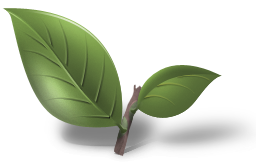Hi All!
First time posting but I must admit to lurking for some time as I attempt to self educate on my new fascination with Tea, in particular Japanese Green Tea, and even more in particular, high-quality Japanese Gyokuro. With that said, as I have searched for info on the very subjective topic of "what teaware is most appropriate for "x" tea?", I haven't really found any direct answers to some of my questions. My hope is that some of you kind folks could opine and help me navigate this rather unfamiliar world to me. So thanks in advance!
My main question is what would be your recommendation if you were looking to get really serious about a daily (or semi-daily depending on budget) Gyokuro brewing ritual? I have narrowed this down some and more specifically am wondering what, if any, would be the main differences and pros/cons between Bizen-ware Hohin and Tokoname Hohin? Is it more of an atheistic determination that defines the desirability in the beholder's eyes of these two varieties of Hohin or is there something more intrinsic to the brewing that they offer or detract? For instance is the porosity and potentially thickness of Bizen-ware a problem with temperature control needed for consistent Gyokuro? Or is the body of the liquor enhanced because of this porosity? Am I just splitting hairs?
The two Hohins that I am currently considering are these:
Bizen:
https://www.artisticnippon.com/product/ ... Z-275.html
Tokoname:
https://www.artisticnippon.com/product/ ... uhin6.html
Once again your thoughts and words on this are much appreciated! And to any and all here that celebrate Thanksgiving...a very Happy Thanksgiving to you all!
Bizen or Tokoname for Gyokuro?
I've had several Tokoname kyusu, made from distinct appearing clays, which shared a delicate thinness of wall; my only bizen purchase has been a cup that seems a bit thicker but it's very hard to judge from the rim alone. I've made gyokuro in all of the Tokoname pots, and they worked well with it, but I mostly prepare it in smaller pots which are not from Tokoname or Bizen.
They're both lovely, and I'm sure either one would make good tea; I like have a slight preference for the aesthetics of the second one as well.
They're both lovely, and I'm sure either one would make good tea; I like have a slight preference for the aesthetics of the second one as well.
Same as the previous answers, if I had to choose I’d go for the second one. My own choice is for shudei or other Japanese red clay to brew this kind of tea. Oxydation or reduction firing make no big difference. The iron content of these clay make the tea body more velvety and acts as umami and creaminess enhancer.
Here you can see what I use:
Here you can see what I use:
- Attachments
-
- 8B78658A-06B5-4B89-9D67-B5C8FEA08397.jpeg (270.72 KiB) Viewed 7712 times
I can’t tell you exactly what it does, just that for some reason greener teas come out quite balanced and emphasising certain aspects of it. If the teas are of not so good quality, those will be emphasised as well, so it is a double edged affair.
With green in general you don’t want to take any of the delicate flavours taken away by absorbing clays.
But it is highly personal, so the best thing would be to try side by side and double check with porcelain.
Thanks Bok!Bok wrote: ↑Fri Nov 29, 2019 2:33 amI can’t tell you exactly what it does, just that for some reason greener teas come out quite balanced and emphasising certain aspects of it. If the teas are of not so good quality, those will be emphasised as well, so it is a double edged affair.
With green in general you don’t want to take any of the delicate flavours taken away by absorbing clays.
But it is highly personal, so the best thing would be to try side by side and double check with porcelain.
It really depends on the gyokuro and or sencha, just like with white, black, oolong, not all Japanese greens are the same. Over at the Inaugural Gyokuro Tasting I’ve been using Shigaraki clay with Sinensis Yokkaichi gyokuro because it is lighter bodied, so a slightly absorbing clay like this adds some brothiness.
With gyokuro I’ll use reduction and oxidation fired, wood fired, and many different clays (depending on leaf and volume) from Tokoname Shudei, Shigaraki, Banko, stoneware, to porcelain. I don’t own a Bizen-ware kyusu so can’t comment on those. Usually I’ll use either porcelain or Shudei clay as a baseline for new gyokuro.
Regarding Bizen versus Tokoname wood fired houhin you were asking about. I’ll guess that the Bizen is slightly thicker walled than the Yamada Sou one. This won’t make much difference with gyokuro, which is typically steeped at lower temperatures. It might slightly become an issue with certain sencha that prefer temperatures above 155F (68C), although this can be corrected by using slightly cooler water and or shorter steeping times.
- bentz98125
- Posts: 77
- Joined: Tue Apr 30, 2019 10:08 pm
- Location: Seattle
I too need to try red clay. I know a lot of people like the effect on flavor of Banko clay. I have read Banko clay reduces astringency. "Mellowing" or "muddying" the overall flavor are both words I've seen used to describe it. There are two senchas I drink that I distinctly prefer Banko clay for, whereas others and Gyokuro I don't like anything at all besides water, temperature, and time to effect the flavor. Both Tokanome and Bizen fit that bill so it would be all down to visual considerations. Don't forget to consider Hagi too. Obviously you need one of all three which begs the eternal question "Is it possible to own too many tea ceramics?". Just keep chanting the mantra "quality over quantity... quality over quantity".
